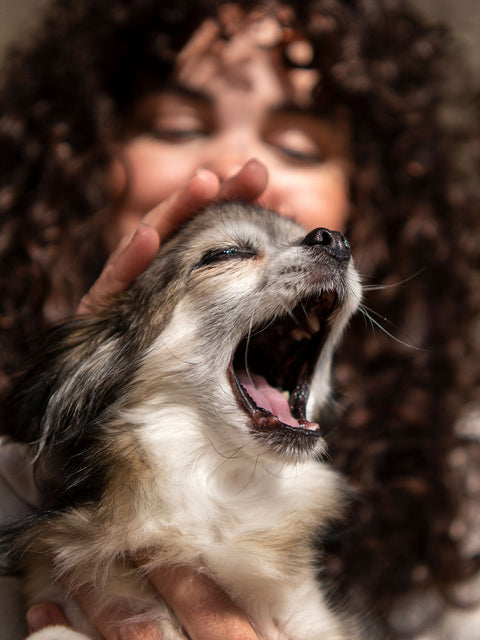
Bad Dog Breath Isn’t Normal—Here’s What It’s Really Telling You
That stinky smell could be the sign of something serious.
We’ve all laughed at “dog breath.” It’s one of those things that seems, well, normal. But here’s the truth: chronic bad breath in dogs is a red flag, not just a funny quirk. It’s one of the earliest signs of periodontal disease—and it’s your dog’s way of telling you something’s off.
Why does your dog’s breath smell?
The real culprits are bacteria—millions of them. As dental plaque builds up on your dog’s teeth, it forms a sticky biofilm that’s teeming with microbes. These bacteria release smelly compounds like ammonia and volatile sulfur compounds, which are behind that classic “dog breath” smell.
If left unchecked, this bacteria doesn’t just cause odor. It starts a slow-moving process that leads to inflammation of the gums, loss of tissue and bone, and eventually—painful, costly, and preventable dental disease.
The science behind the stink
Veterinary researchers have found that these bacteria and their byproducts can:
-
Penetrate under the gum line, triggering the body’s immune system
-
Produce toxins that lead to chronic gum inflammation
-
Enter the bloodstream, potentially reaching the heart, liver, and kidneys
That’s why chronic halitosis (persistent bad breath) is now considered an early warning sign of systemic health issues—not just a surface problem.
What you can do (without the shame spiral)
First of all: you’re doing great. If you’re here, you care—and that’s what matters most. Catching early signs like bad breath gives you the upper hand.
To start:
-
Introduce daily brushing with a soft, dog-friendly toothbrush (like our Barkus 360° Soft Bristle Toothbrush) paired with a good enzymatic toothpaste.
-
Add oral-friendly chews or dental treats as a supportive measure
-
Schedule a vet dental check-up once a year (or more if your dog is over 3)
Early action can prevent not only tooth loss but also long-term health complications. And yes, it can turn that funky breath into something much more kissable.
Healthy Mouth, Healthy Pup
“Dog breath” isn’t just an inconvenience—it’s often one of the earliest signs of periodontal disease, a condition that affects up to 86% of dogs by age three. Bad breath, plaque buildup, and gum inflammation can all indicate an underlying oral health issue.
The good news? Regular care and preventive habits can go a long way in supporting your pup’s long-term health. From daily brushing to professional cleanings and vet-approved chews, there are plenty of options to protect your dog’s smile.
Sources:
Adapted from: Moreira et al., Veterinary Sciences, 2022 – PMC9774197

Comments (0)
There are no comments for this article. Be the first one to leave a message!